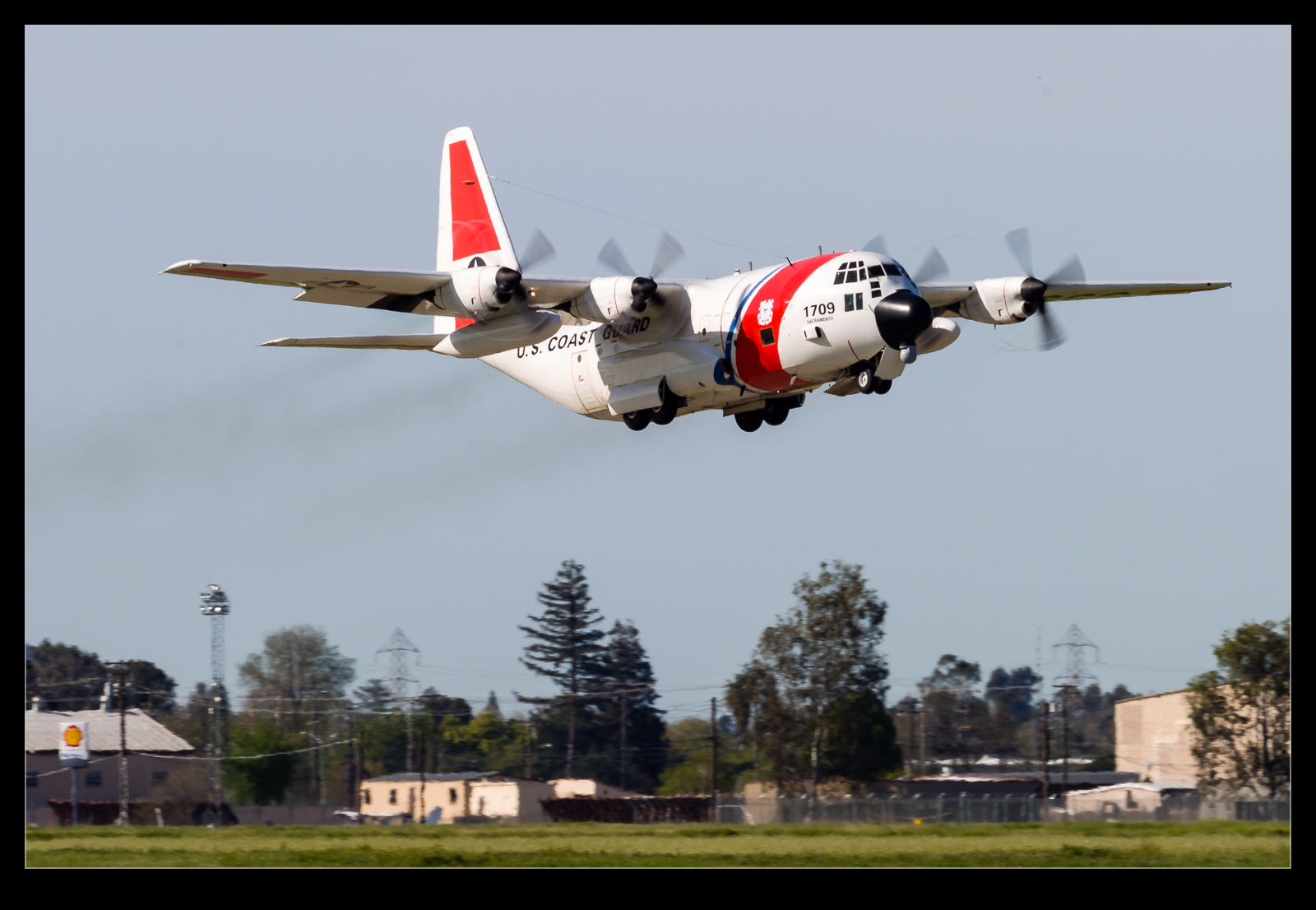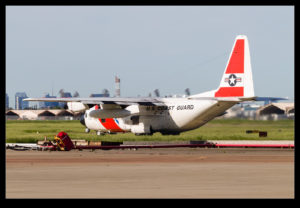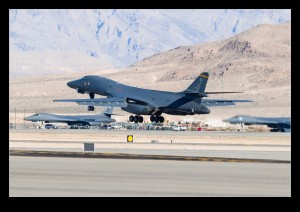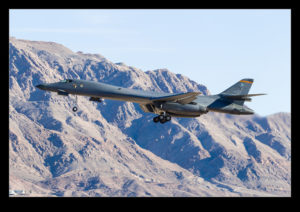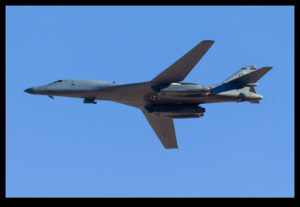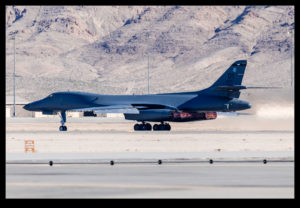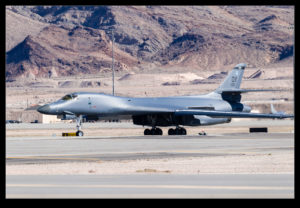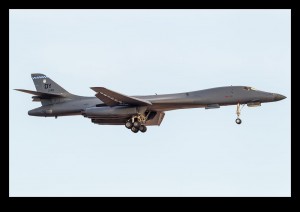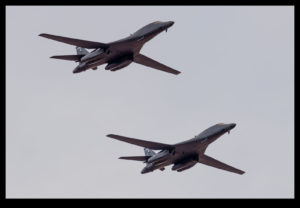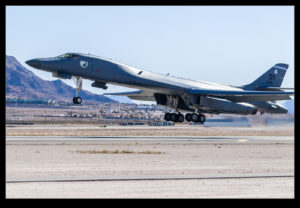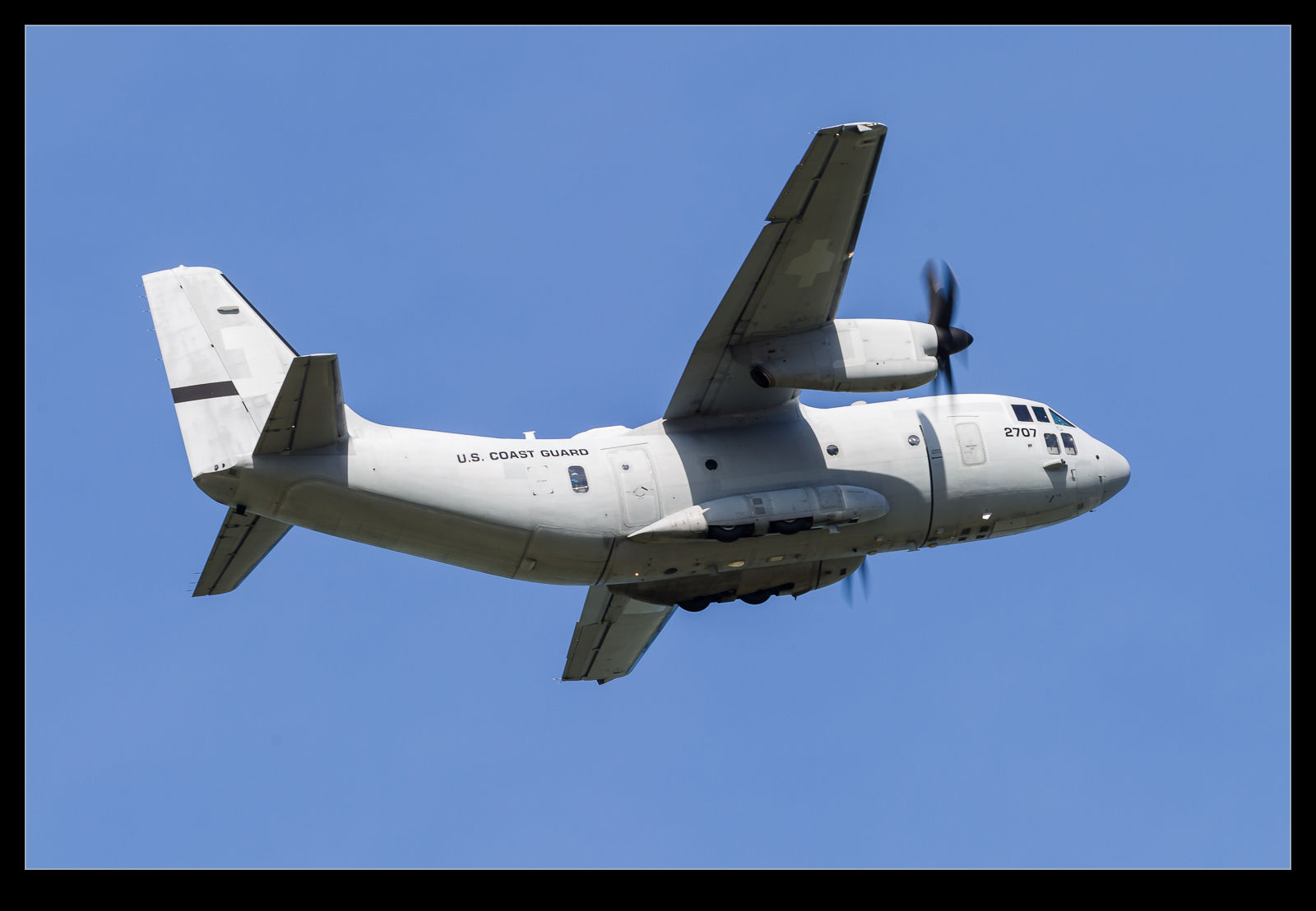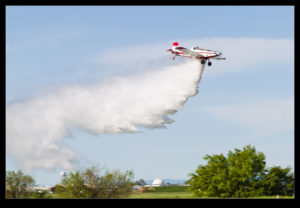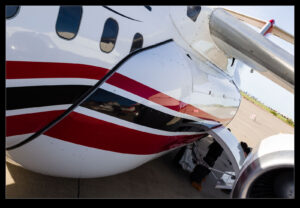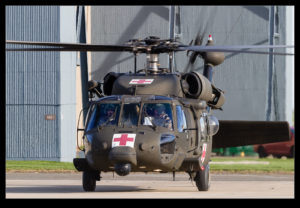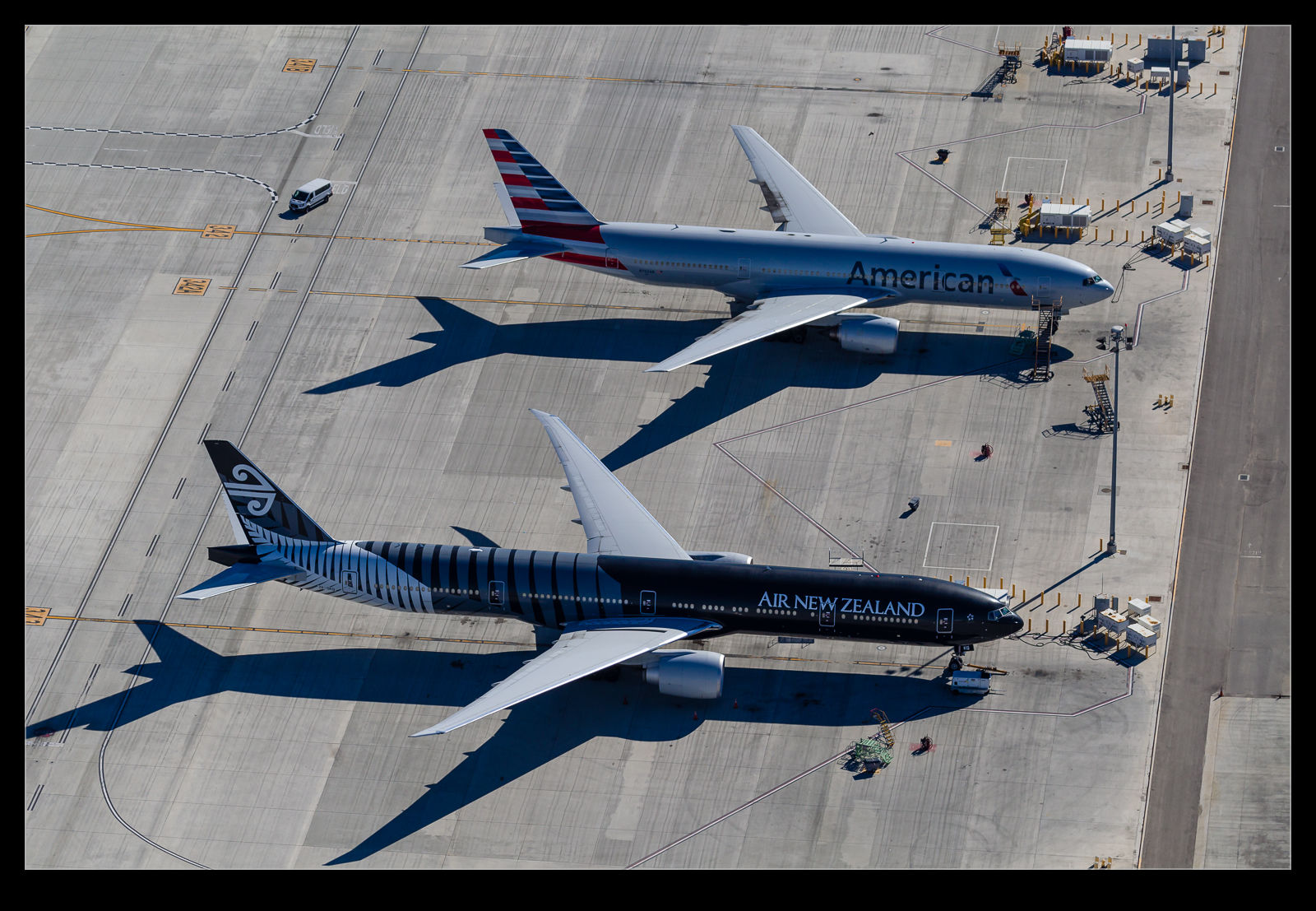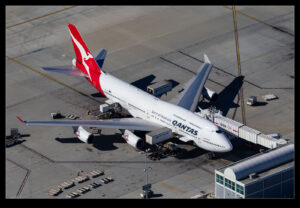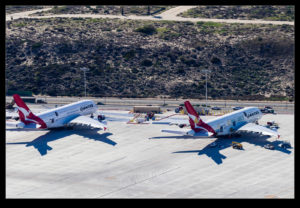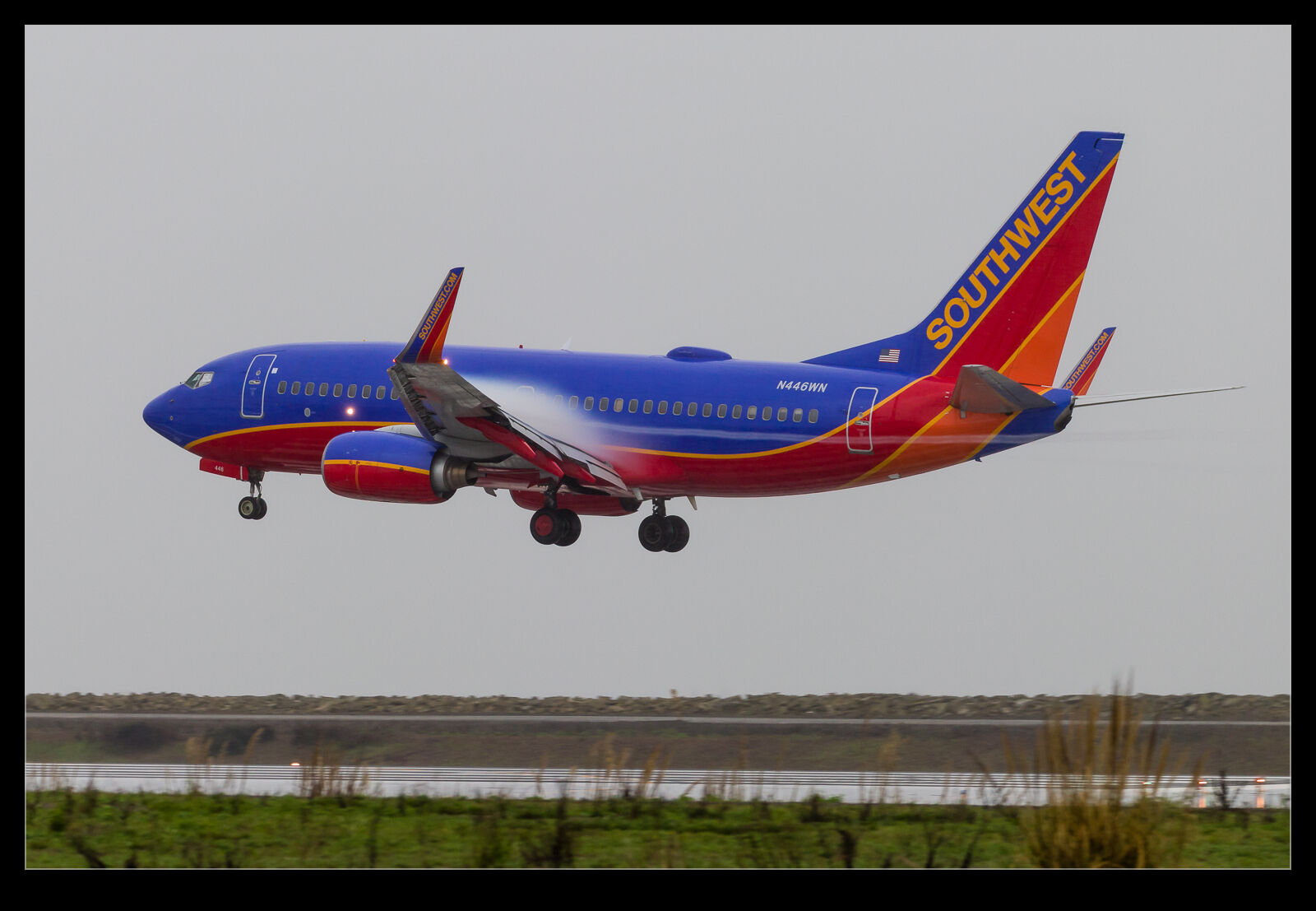 Getting shots of vapor is a popular thing when shooting fast jets. An airliner on a damp day can also result in some clouds being formed. While shooting something special at Oakland, I was getting a few shots to make sure the light metering was working as planned. A Southwest 737 came in and, as it flared for landing, it had a nice cloud of moisture form over the wing. Normally these things pop up further out on the approach and don’t make for a good shot but this one was close at hand.
Getting shots of vapor is a popular thing when shooting fast jets. An airliner on a damp day can also result in some clouds being formed. While shooting something special at Oakland, I was getting a few shots to make sure the light metering was working as planned. A Southwest 737 came in and, as it flared for landing, it had a nice cloud of moisture form over the wing. Normally these things pop up further out on the approach and don’t make for a good shot but this one was close at hand.
Tag Archives: aircraft
The Early Emirates
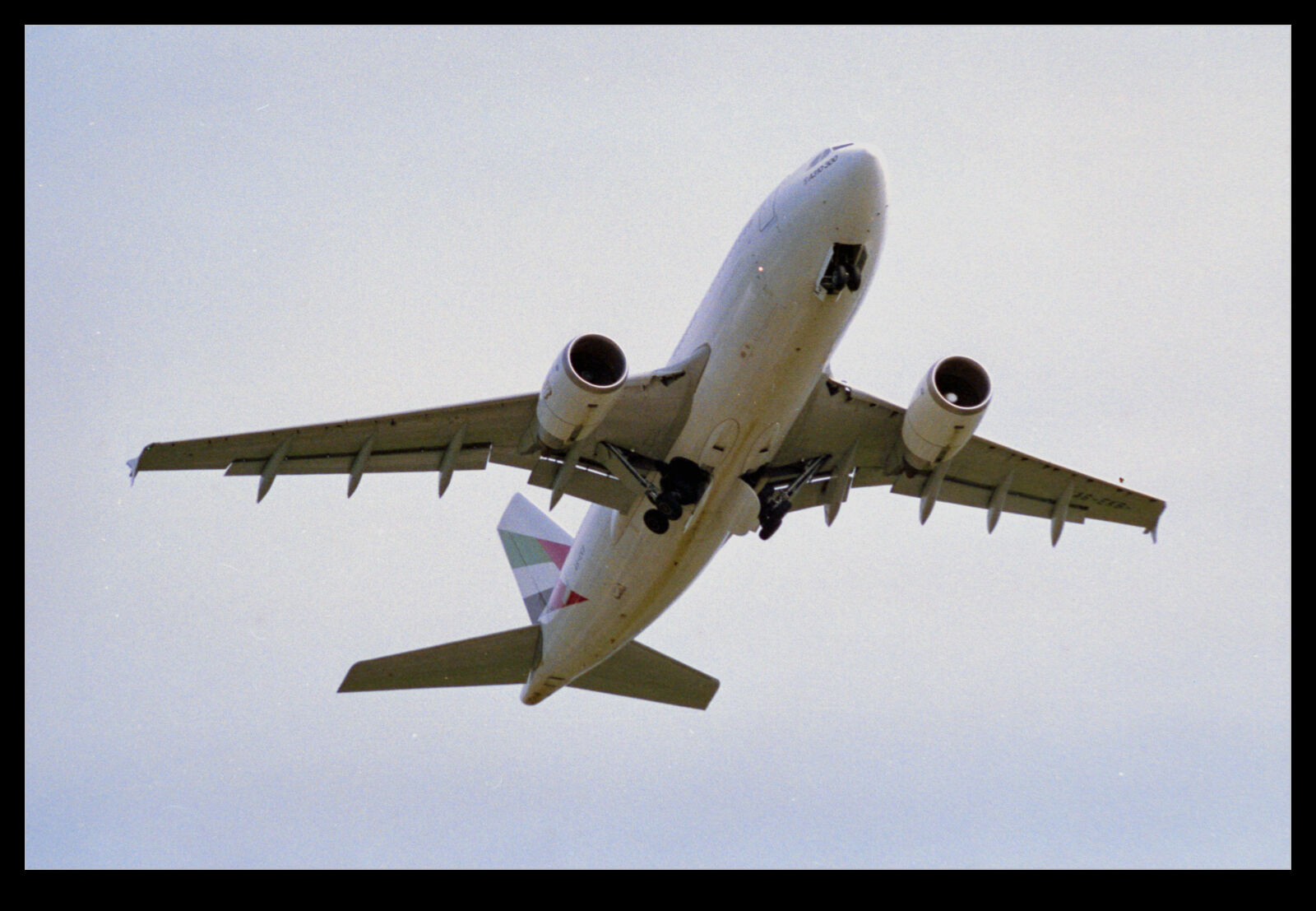 If you were to ask someone to name one of the dominant global airlines these days, it wouldn’t be long before the name Emirates came up. The rapid growth and large fleet of wide-bodies makes Emirate a familiar sight around the world. It is easy to forget that is was not always thus. I first saw Emirates in 1988. At the time, I had a small book of airliners around the world and it listed the planes that were potentially going to be seen in the UK. It didn’t include short haul jets from the opposite side of the world but it did have something that could conceivably be seen. At the time, Emirates were listed as having one A300 and two A310s. A far cry from what they have now.
If you were to ask someone to name one of the dominant global airlines these days, it wouldn’t be long before the name Emirates came up. The rapid growth and large fleet of wide-bodies makes Emirate a familiar sight around the world. It is easy to forget that is was not always thus. I first saw Emirates in 1988. At the time, I had a small book of airliners around the world and it listed the planes that were potentially going to be seen in the UK. It didn’t include short haul jets from the opposite side of the world but it did have something that could conceivably be seen. At the time, Emirates were listed as having one A300 and two A310s. A far cry from what they have now.
They used to fly in to Gatwick with the A310s. While working for the CAA, I got to spend a bunch of time under the approach to Gatwick recording noise levels of the passing jets. I did manage to get the occasional shot too! Here is a scan of a slightly rough negative of an Emirates A310 passing the middle marker. This plane would now be considered a bit too small for their regular operations!
Coast Guard C-130 in its Final Days
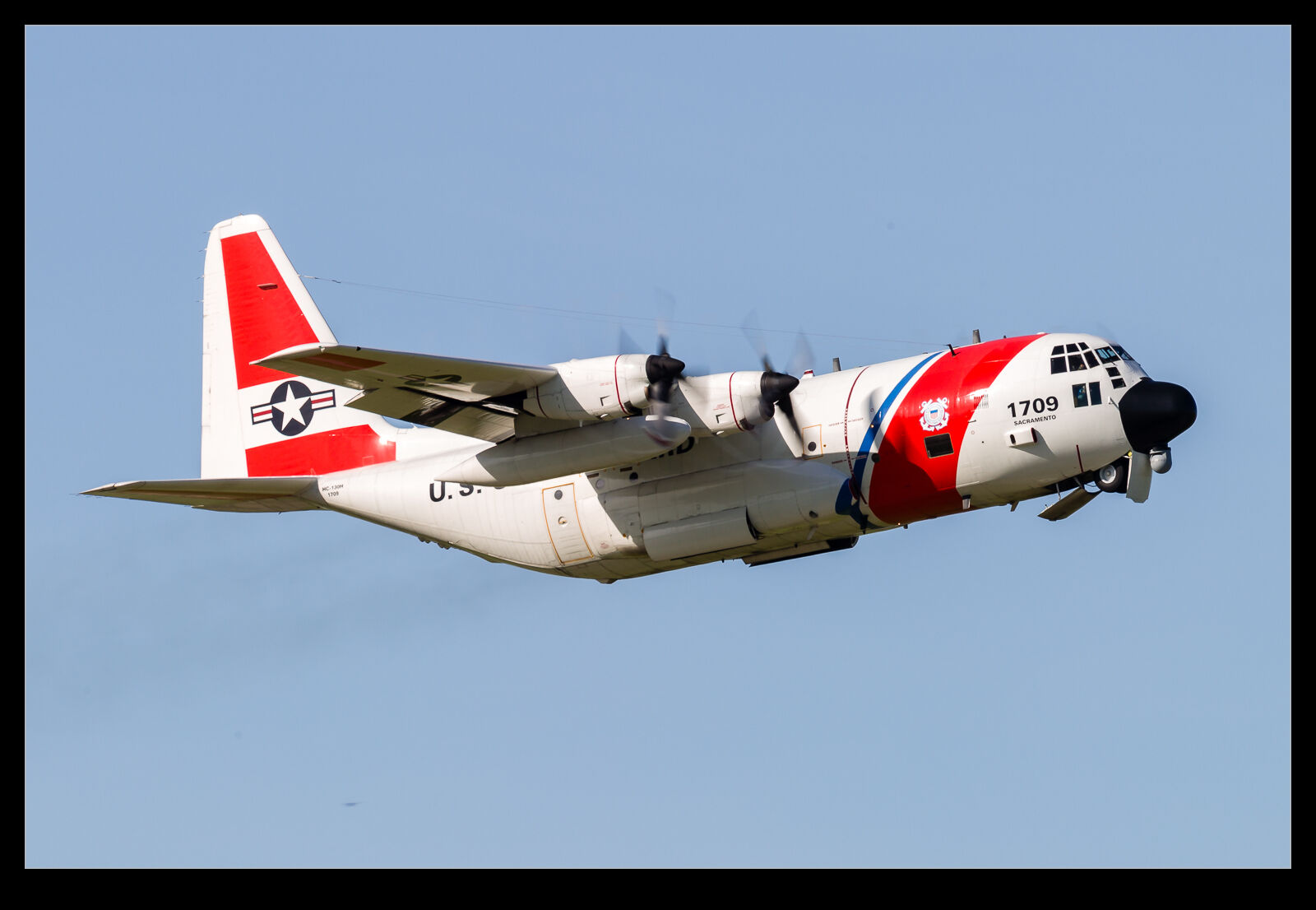 I wrote about the arrival of the C-27J Spartan in Coast Guard service. This means that the C-130s are going to be heading out. One the same day I saw a Spartan flying, one of the current C-130s took off. It was a nice illustration of what is now and what will be. I have seen the Coast Guard 130s around on a number of occasions but I guess they will soon be gone. Maybe I shall see them fighting fires somewhere.
I wrote about the arrival of the C-27J Spartan in Coast Guard service. This means that the C-130s are going to be heading out. One the same day I saw a Spartan flying, one of the current C-130s took off. It was a nice illustration of what is now and what will be. I have seen the Coast Guard 130s around on a number of occasions but I guess they will soon be gone. Maybe I shall see them fighting fires somewhere.
Those That Sneaked In
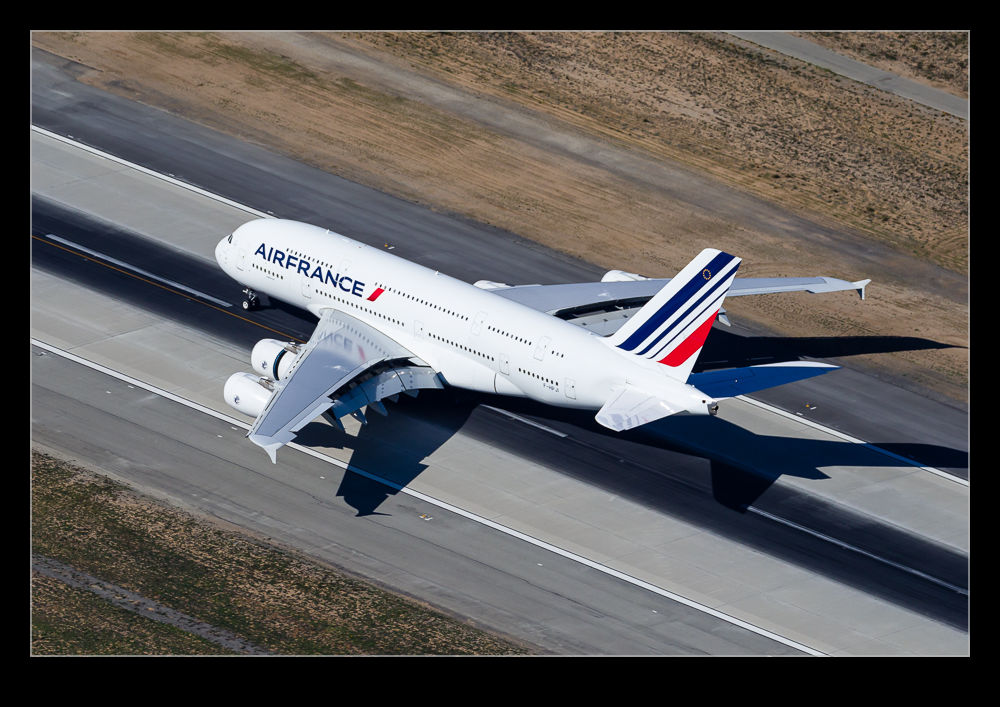 I learned something significant while shooting the airliners from above LAX. It is a lot harder to see an airliner from above than I thought. In the many years of flying, I am familiar with the importance of maintaining a good lookout and the difficulty of spotting other aircraft around you in the sky. From our locations over the airport, we were generally picking out the aircraft from a background of the city, not the sky. I had figured that we knew the approach paths and what was due in so we would not have trouble seeing the planes as they came in.
I learned something significant while shooting the airliners from above LAX. It is a lot harder to see an airliner from above than I thought. In the many years of flying, I am familiar with the importance of maintaining a good lookout and the difficulty of spotting other aircraft around you in the sky. From our locations over the airport, we were generally picking out the aircraft from a background of the city, not the sky. I had figured that we knew the approach paths and what was due in so we would not have trouble seeing the planes as they came in.
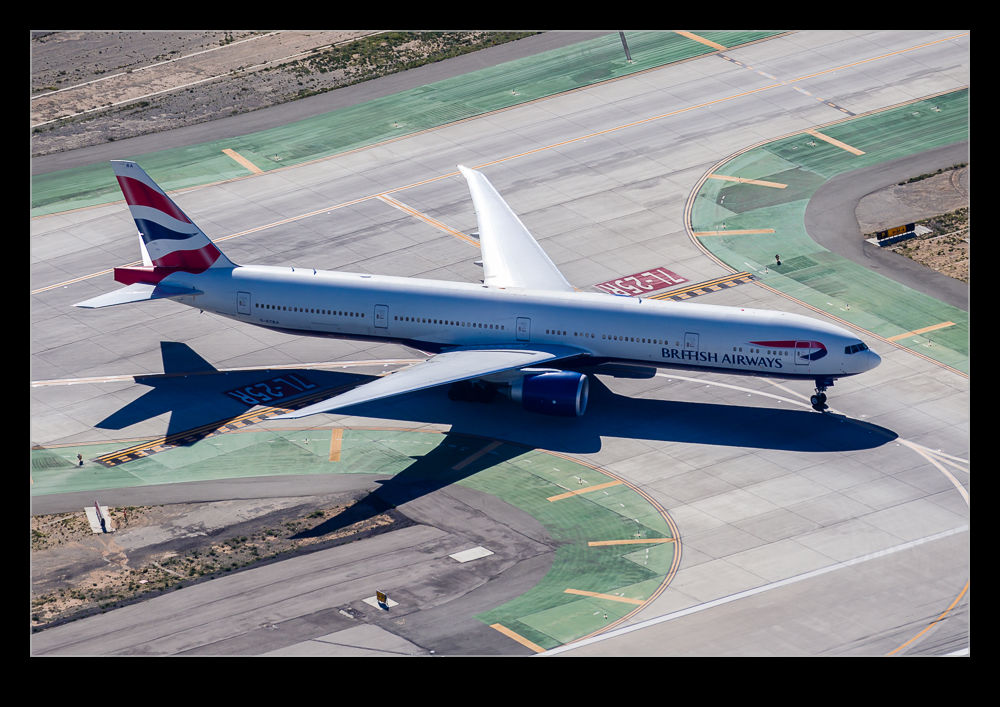 I was very wrong. First, they are not easy to find at all. Three sets of eyes were looking but we would find things at odd times, sometimes when they were very close. Also, with parallel operations to the 24 and 25 complexes, you can get distracted by activity on one side and miss out on something the other side. The result of this was that we did not see some of the jets until they were on the ground. Pete, who was with me, flies 777s so we were keen to get the BA jet when it came in. We knew the arrival time and still managed to miss it until it was on the ground. An Air France A380 also sneaked in past our “diligent” scan. An Aeroflot A330 was also successful in coming in untouched.
I was very wrong. First, they are not easy to find at all. Three sets of eyes were looking but we would find things at odd times, sometimes when they were very close. Also, with parallel operations to the 24 and 25 complexes, you can get distracted by activity on one side and miss out on something the other side. The result of this was that we did not see some of the jets until they were on the ground. Pete, who was with me, flies 777s so we were keen to get the BA jet when it came in. We knew the arrival time and still managed to miss it until it was on the ground. An Air France A380 also sneaked in past our “diligent” scan. An Aeroflot A330 was also successful in coming in untouched.
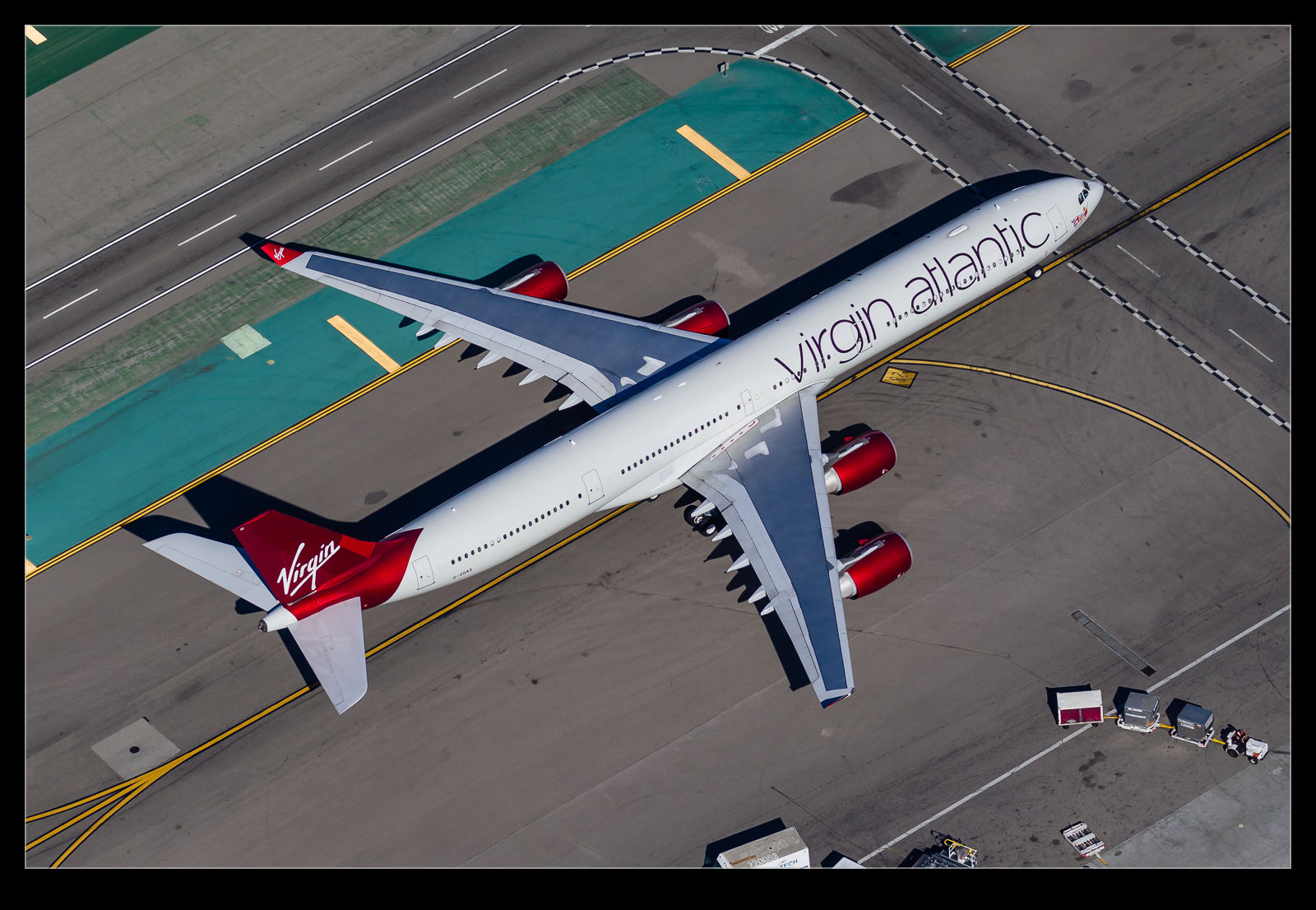 All of these were a little frustrating but not terrible. However, it did give me pause for thought about how I would plan the flight the next time in order to keep track of the things that I most wanted to get. This flight was my first time trying this so I was happy to have got so many shots that I like. The missed ones are not the end of the world. I did learn a lot though and will make sure I use that knowledge next time.
All of these were a little frustrating but not terrible. However, it did give me pause for thought about how I would plan the flight the next time in order to keep track of the things that I most wanted to get. This flight was my first time trying this so I was happy to have got so many shots that I like. The missed ones are not the end of the world. I did learn a lot though and will make sure I use that knowledge next time.
B-1Bs on a Mission
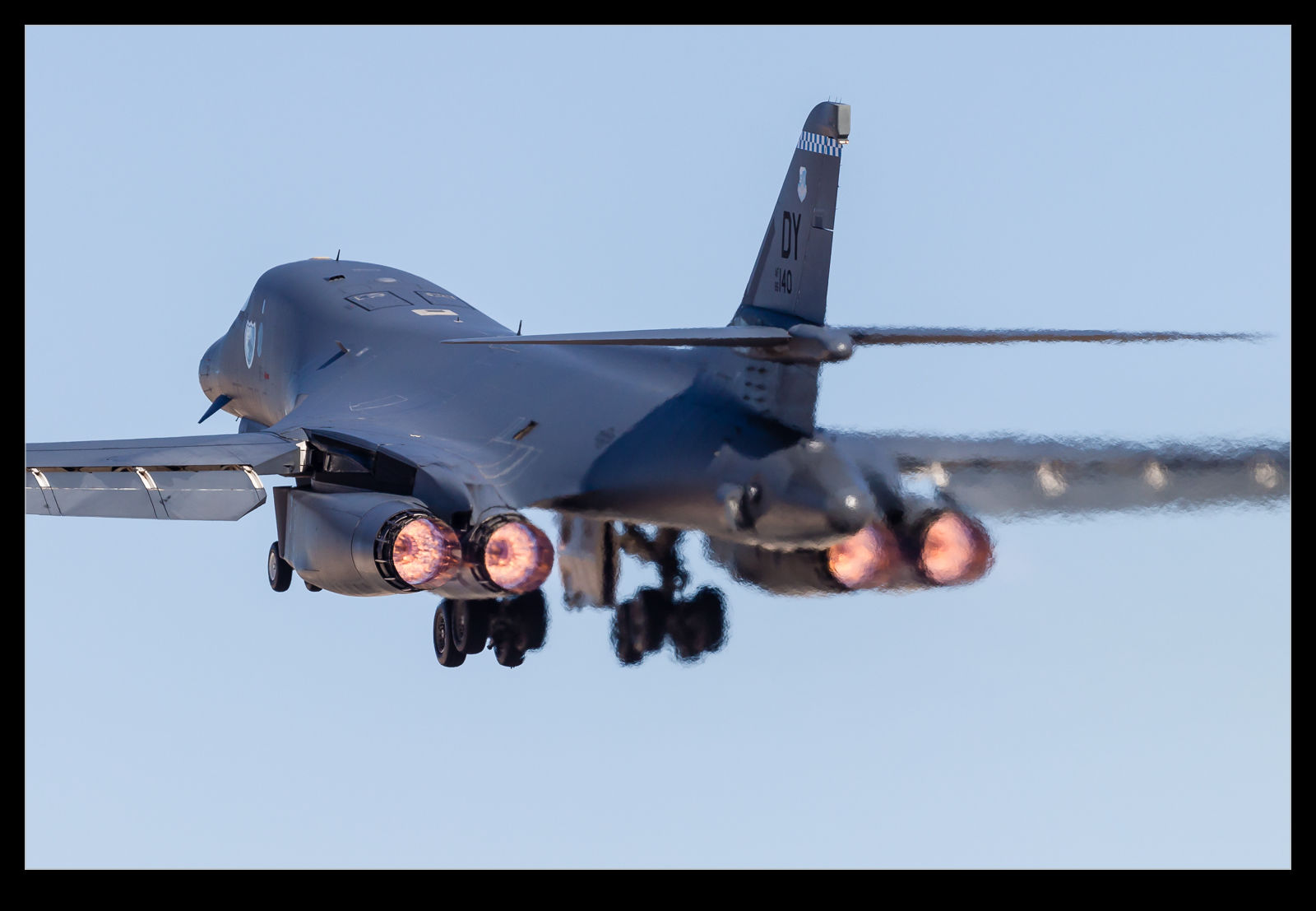 The B-1B Lancer is a cracking aircraft. The combination of size and power makes it look epic when it is in action. A B-1 departure is not something that you will forget in a hurry. Four large afterburning turbofans will get your attention and it has a very elegant shape to boot. The variable sweep wings add a little interest too. At minimum sweep for takeoff and landing, they look a little ungainly given how long the span is. Put them all the way back and pour on the coals and the jet can really get moving. Sadly, airshow appearances are few and far between these days so the chance to see vapor clouds forming around the jet are limited. (I recently went through some old negatives from a UK airshow at which a B-1 made a fast pass in damp conditions. The shots aren’t great but the effect is cool.)
The B-1B Lancer is a cracking aircraft. The combination of size and power makes it look epic when it is in action. A B-1 departure is not something that you will forget in a hurry. Four large afterburning turbofans will get your attention and it has a very elegant shape to boot. The variable sweep wings add a little interest too. At minimum sweep for takeoff and landing, they look a little ungainly given how long the span is. Put them all the way back and pour on the coals and the jet can really get moving. Sadly, airshow appearances are few and far between these days so the chance to see vapor clouds forming around the jet are limited. (I recently went through some old negatives from a UK airshow at which a B-1 made a fast pass in damp conditions. The shots aren’t great but the effect is cool.)
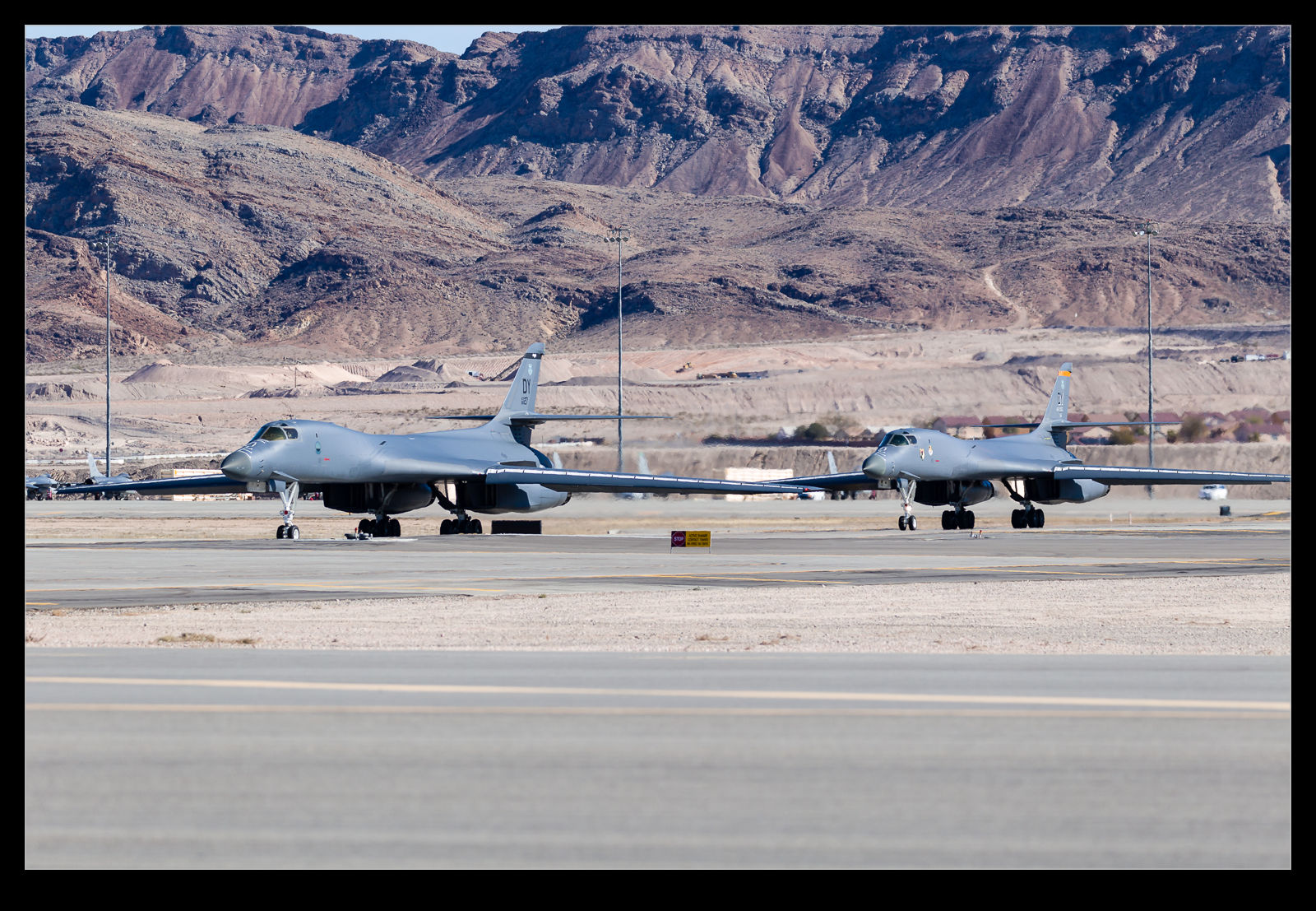 A couple of B-1s would launch each day as part of the Red Flag 16-1 exercises. I was lucky enough to have a couple of good opportunities to see then. When we were out between the runways, the B-1s launched off the right side. Not ideal for lighting but you aren’t going to complain. Because they are a large jet, you have to make some choices with lenses as to what you are aiming to get. A quick swap of bodies can really help. A long lens is not much use when they are level with you but the cool shot from behind as they climb out benefits from the big glass.
A couple of B-1s would launch each day as part of the Red Flag 16-1 exercises. I was lucky enough to have a couple of good opportunities to see then. When we were out between the runways, the B-1s launched off the right side. Not ideal for lighting but you aren’t going to complain. Because they are a large jet, you have to make some choices with lenses as to what you are aiming to get. A quick swap of bodies can really help. A long lens is not much use when they are level with you but the cool shot from behind as they climb out benefits from the big glass.
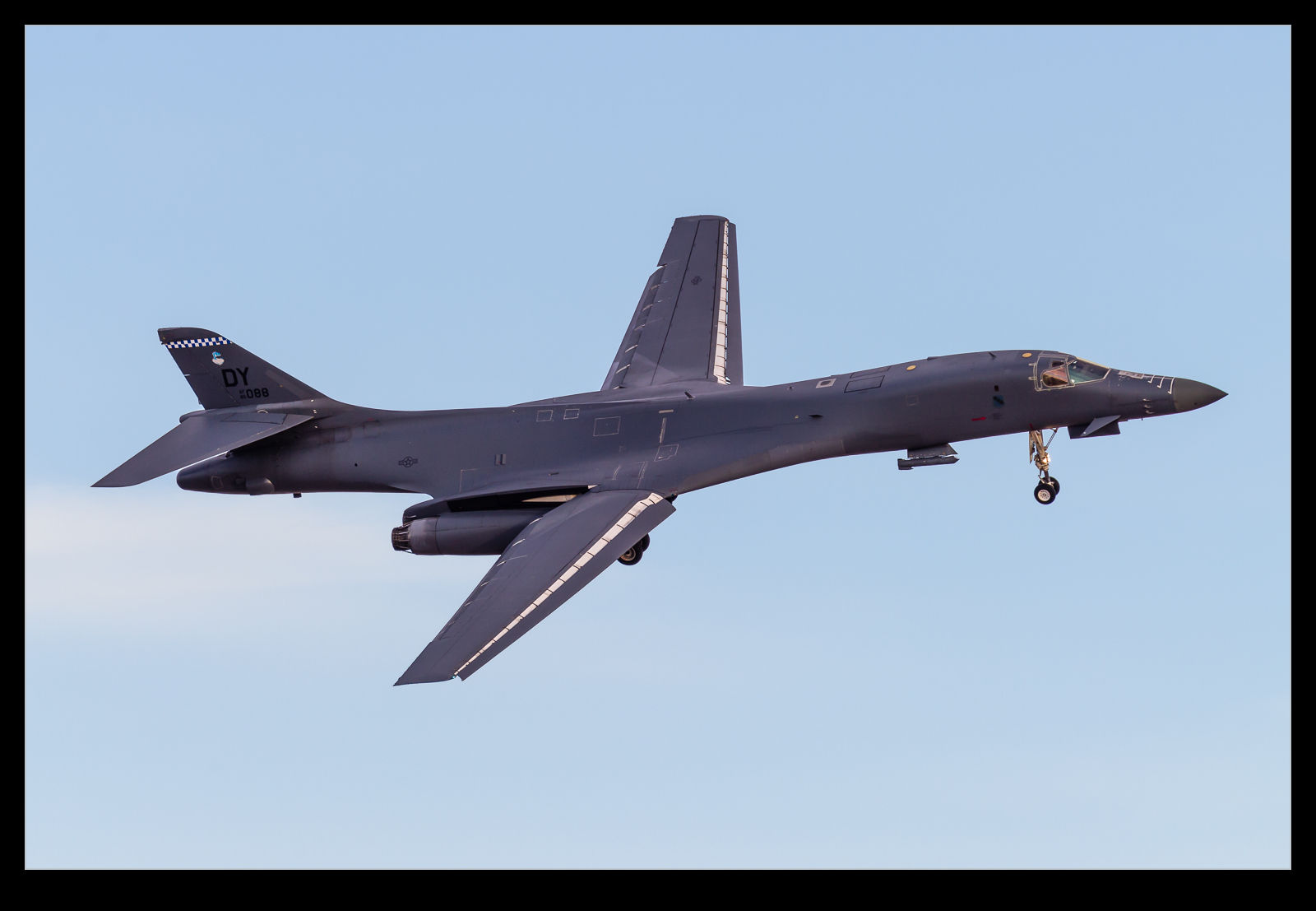 On my first day there, the jets returned at the end of the mission as a pair. Sadly, the clouds had moved in and the conditions were not great for getting a shot. However, you aren’t going to ignore them. On the second day when I was at the EOR, we got a good view of the two jets taxiing out and taking off. The heat haze is a bit of a problem but not so much as to make it something you can avoid shooting. Operating as a pair, they look more menacing.
On my first day there, the jets returned at the end of the mission as a pair. Sadly, the clouds had moved in and the conditions were not great for getting a shot. However, you aren’t going to ignore them. On the second day when I was at the EOR, we got a good view of the two jets taxiing out and taking off. The heat haze is a bit of a problem but not so much as to make it something you can avoid shooting. Operating as a pair, they look more menacing.
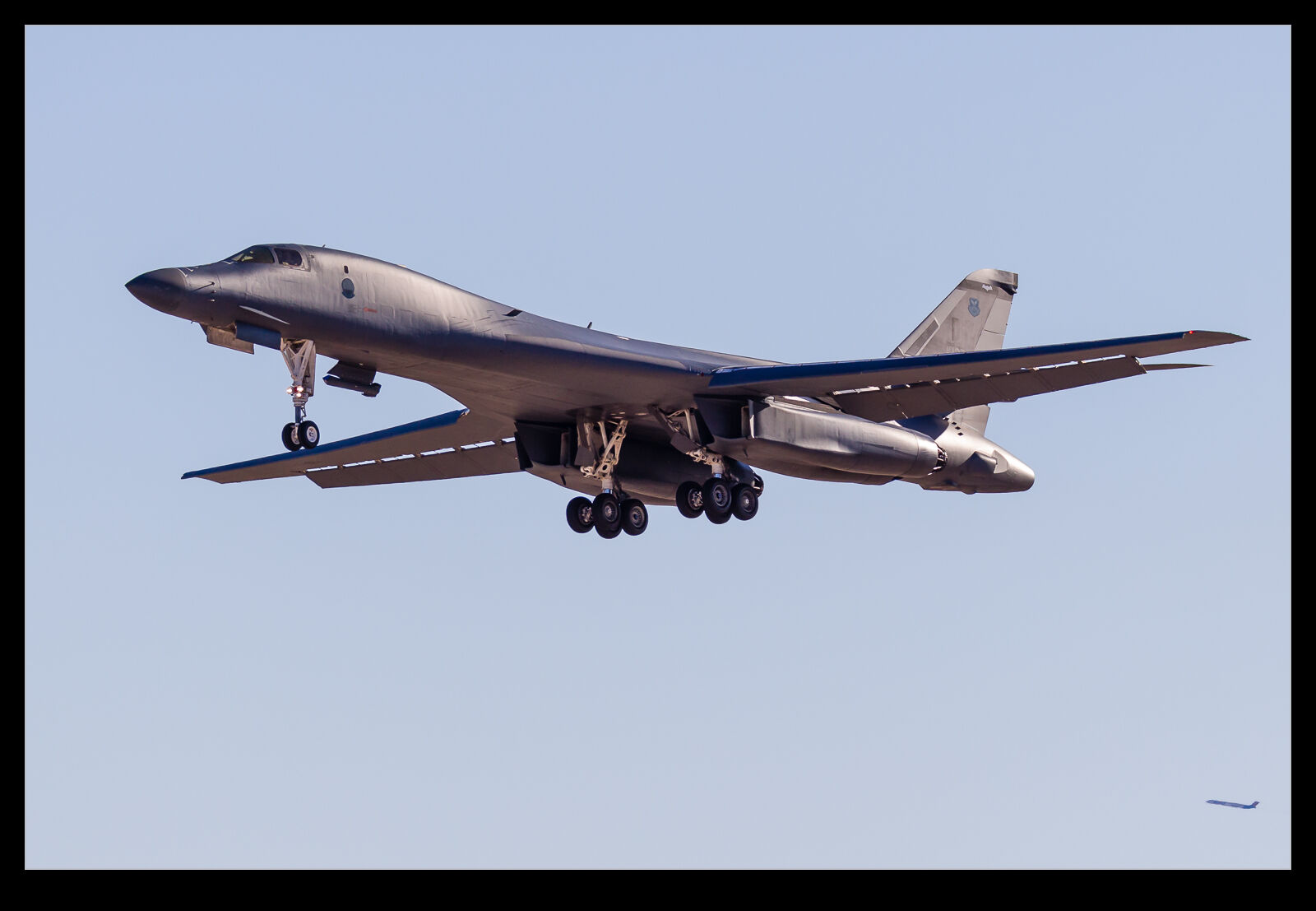 Often the B-1s are at the end of the recovery phase. However, on this day, they came back relatively early. I was still at the EOR when they broke into the pattern. They did land on the opposite runway from the one we were at but they are big enough for this to not be a big deal. A nice bit of mountain in the background certainly helps enhance the shot a little. What a great looking jet. I don’t know anyone who isn’t excited when they see one in action.
Often the B-1s are at the end of the recovery phase. However, on this day, they came back relatively early. I was still at the EOR when they broke into the pattern. They did land on the opposite runway from the one we were at but they are big enough for this to not be a big deal. A nice bit of mountain in the background certainly helps enhance the shot a little. What a great looking jet. I don’t know anyone who isn’t excited when they see one in action.
- A USAF B-1B Lancer on final approach to Nellis AFB Las Vegas Nevada as part of a Red Flag mission.
- A USAF B-1B Lancer on final approach to Nellis AFB Las Vegas Nevada as part of a Red Flag mission.
- A USAF B-1B Lancer overflies Nellis AFB Las Vegas Nevada prior to breaking into the pattern to land after a Red Flag mission.
- Two USAF B-1B Lancers approach the break at Nellis AFB Las Vegas Nevada after a Red Flag mission.
- A Boeing B-1B Lancer of the USAF takes off from Nellis AFB Las Vegas Nevada on a Red Flag Mission.
C-27J Spartan and the USCG
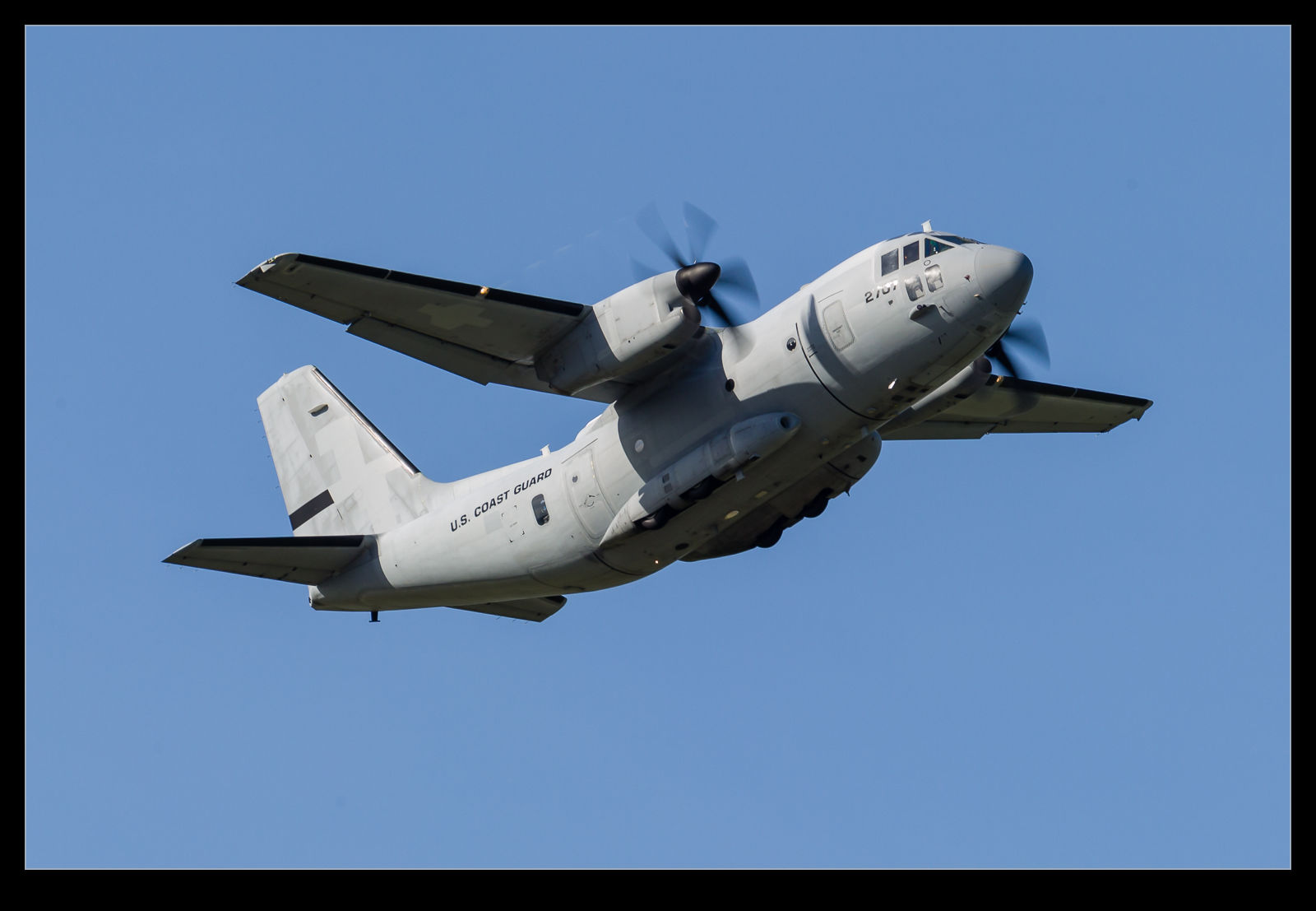 Defense acquisition programs are not renowned for being the most efficient and sensible programs. Selection of products and suppliers is heavily influenced by politics and locations along with the technical capabilities. Some programs have momentum due to their joint use nature. This doesn’t always mean that the departments involved actually like them. Such is the case of the Alenia C-27J Spartan. Based on the older G222 airframe but updated with the same engines as the C-130J, the aircraft was selected for the Joint Cargo Aircraft program between the USAF and the Army.
Defense acquisition programs are not renowned for being the most efficient and sensible programs. Selection of products and suppliers is heavily influenced by politics and locations along with the technical capabilities. Some programs have momentum due to their joint use nature. This doesn’t always mean that the departments involved actually like them. Such is the case of the Alenia C-27J Spartan. Based on the older G222 airframe but updated with the same engines as the C-130J, the aircraft was selected for the Joint Cargo Aircraft program between the USAF and the Army.
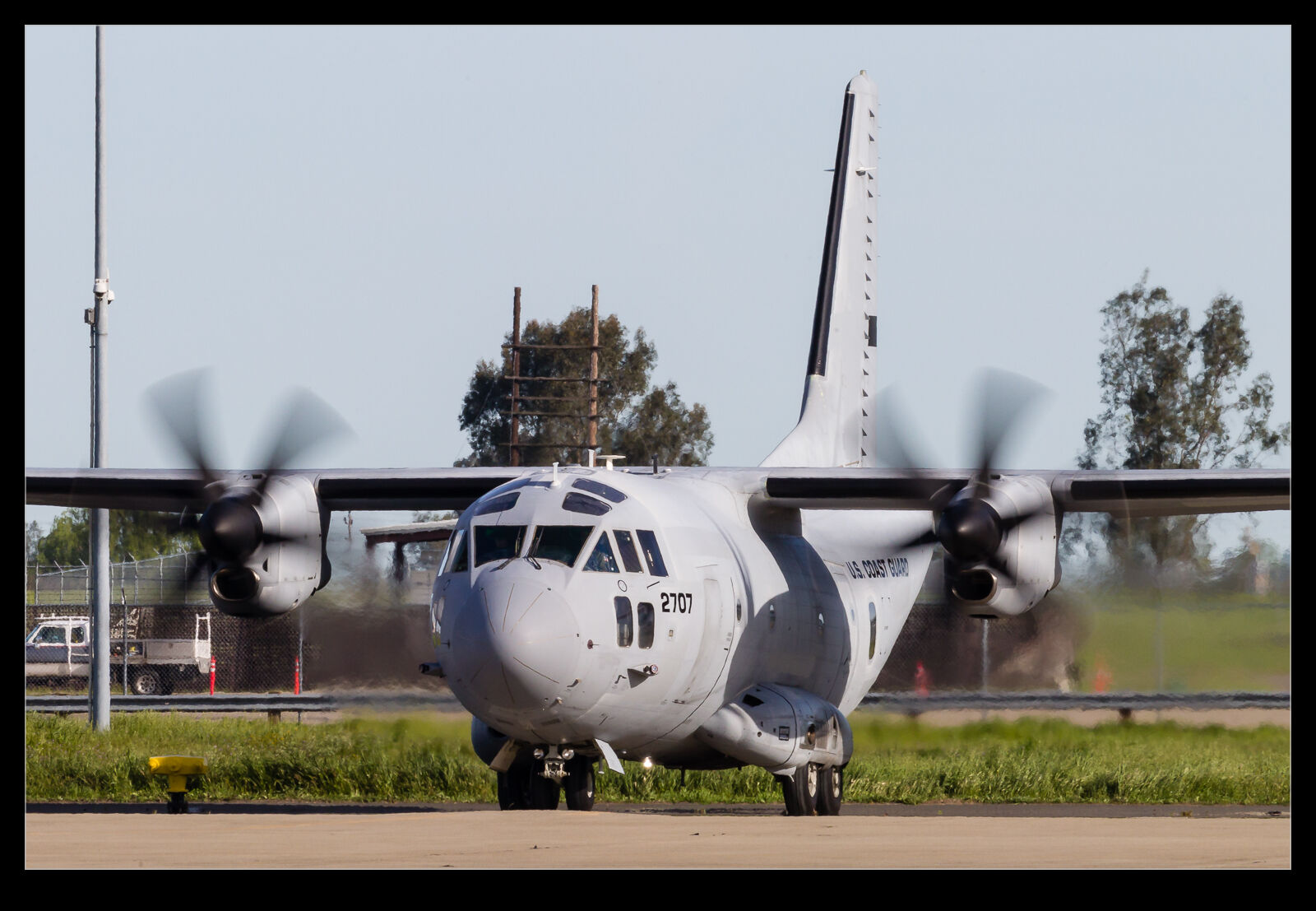 Eventually, control of the program was moved from the Army to an Air Force only program. Meanwhile, the Air Force was not showing a lot of love for the aircraft. They had other programs they were more interested in. The result was that aircraft started getting delivered to storage and the Air Force was looking for a way out. That way is the Coast Guard. These aircraft will replace some old C-130s in Coast Guard service and the displaced aircraft will go for firefighting duties. The Coast Guard station at Sacramento has received its first aircraft. I saw one of them head out on a training flight while another could be seen in the hangar. Apparently, they will soon be repainted in Coast Guard colors and the 130s will start to head off to their new life. It will probably be unusual in due course to have a C-27J in Coast Guard markings but in the gray color scheme.
Eventually, control of the program was moved from the Army to an Air Force only program. Meanwhile, the Air Force was not showing a lot of love for the aircraft. They had other programs they were more interested in. The result was that aircraft started getting delivered to storage and the Air Force was looking for a way out. That way is the Coast Guard. These aircraft will replace some old C-130s in Coast Guard service and the displaced aircraft will go for firefighting duties. The Coast Guard station at Sacramento has received its first aircraft. I saw one of them head out on a training flight while another could be seen in the hangar. Apparently, they will soon be repainted in Coast Guard colors and the 130s will start to head off to their new life. It will probably be unusual in due course to have a C-27J in Coast Guard markings but in the gray color scheme.
Aerial Firefighting Demonstration
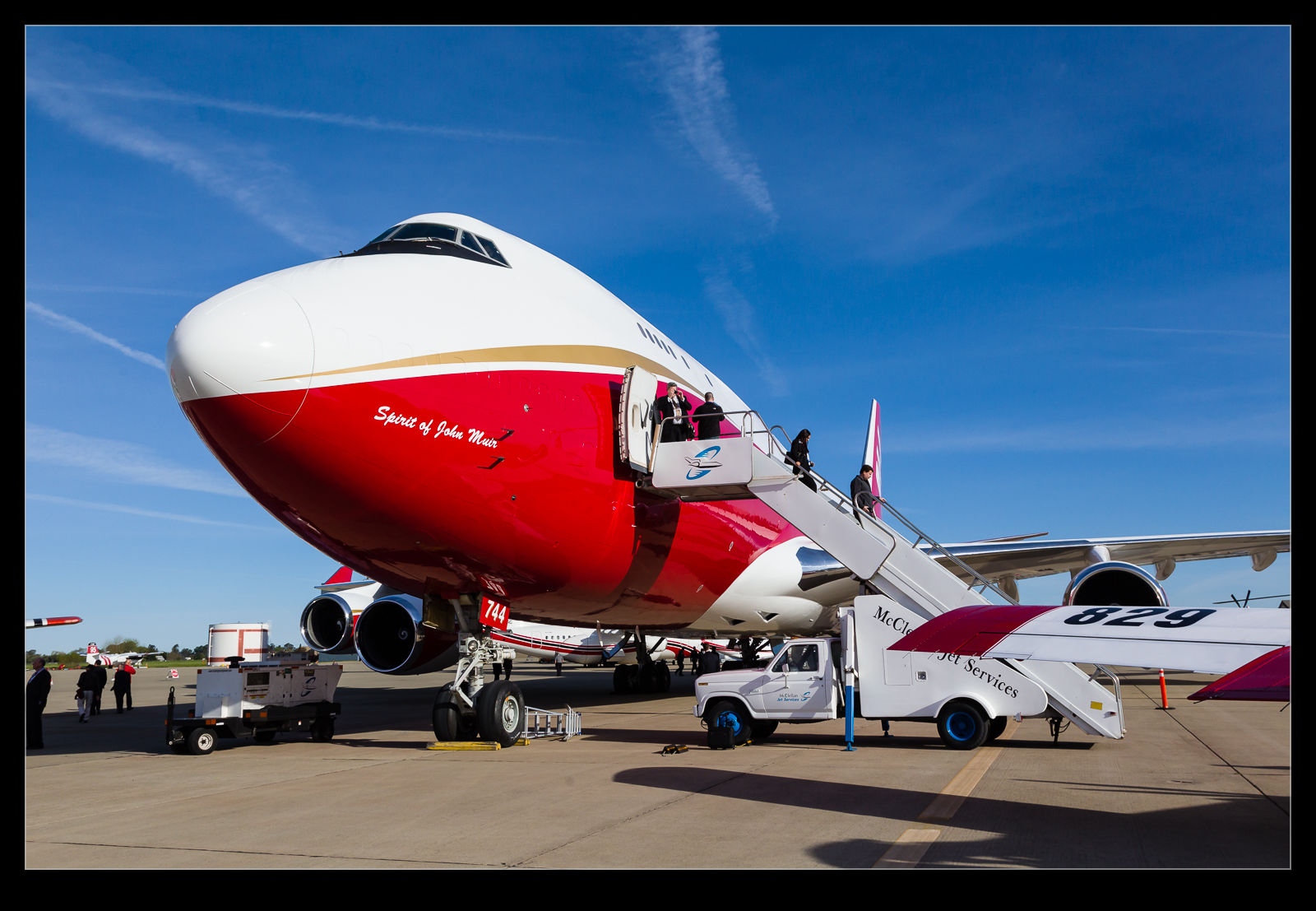 Every other year the Aerial Firefighting conference comes to North America. This year it was held at McLellan Field near Sacramento. A tow day conference, I originally was going to attend on both days. Unfortunately, I had a work conflict and had to miss the first day. Fortunately I was able to be there on the second day which was the day that included a demonstration session on the airfield. An internal exhibition of products and services was open for the entire time but the demonstration included a wide number of airframes – far too large to fit indoors.
Every other year the Aerial Firefighting conference comes to North America. This year it was held at McLellan Field near Sacramento. A tow day conference, I originally was going to attend on both days. Unfortunately, I had a work conflict and had to miss the first day. Fortunately I was able to be there on the second day which was the day that included a demonstration session on the airfield. An internal exhibition of products and services was open for the entire time but the demonstration included a wide number of airframes – far too large to fit indoors.
 There was a wide variety of types on display. Helicopters are a big part of aerial firefighting and there was a number on display. Airbus Helicopters had brought their H215 demonstrator along as the conclusion of their North American tour. This version of the Super Puma is a derivative of the AS332 (and indeed this airframe had a data plate that listed it as an AS332) and is designed to be a simplified and cheaper version providing a more affordable utility type. It was alongside a new Bell 412 and some refurbished airframes including a Bell 205 and a freshly refurbished UH-60 Black Hawk.
There was a wide variety of types on display. Helicopters are a big part of aerial firefighting and there was a number on display. Airbus Helicopters had brought their H215 demonstrator along as the conclusion of their North American tour. This version of the Super Puma is a derivative of the AS332 (and indeed this airframe had a data plate that listed it as an AS332) and is designed to be a simplified and cheaper version providing a more affordable utility type. It was alongside a new Bell 412 and some refurbished airframes including a Bell 205 and a freshly refurbished UH-60 Black Hawk.
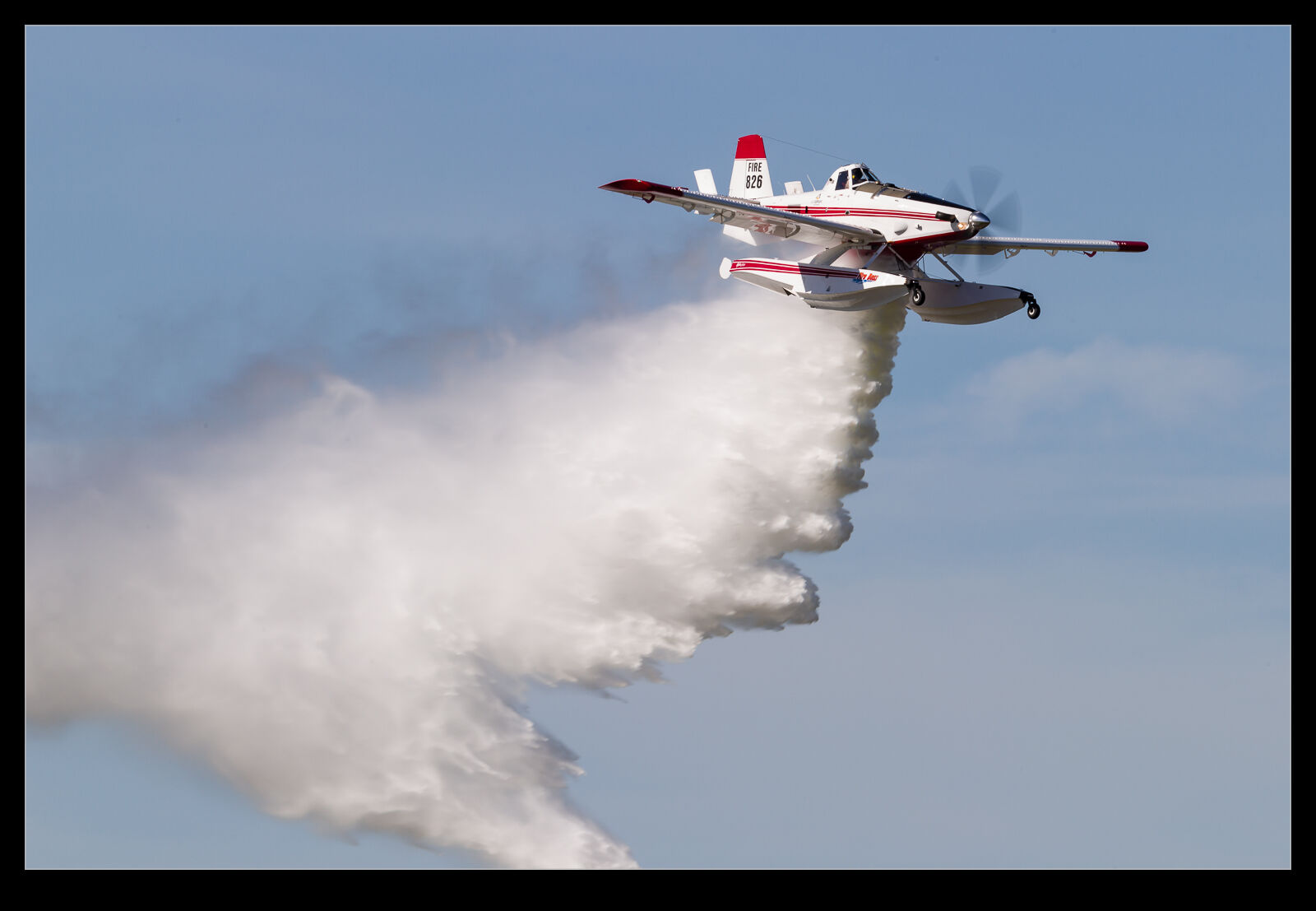 Fixed wing types came in all shapes and sizes too. Air Tractor AT802s were on display in both wheeled and amphibious configurations and these two aircraft put on a number of water drop demonstrations. A Pilatus PC-12 provided a demonstration of management of a fire with down linked information. Calfire had a Bronco and a Tracker on the ramp while a bunch of Broncos were busy in a flying program to get ready for the season. MAFFS had a P-3 on the ramp while another took off early in the program. A Bombardier CL415 shared ramp space with a Neptune conversion of the BAE Systems RJ85.
Fixed wing types came in all shapes and sizes too. Air Tractor AT802s were on display in both wheeled and amphibious configurations and these two aircraft put on a number of water drop demonstrations. A Pilatus PC-12 provided a demonstration of management of a fire with down linked information. Calfire had a Bronco and a Tracker on the ramp while a bunch of Broncos were busy in a flying program to get ready for the season. MAFFS had a P-3 on the ramp while another took off early in the program. A Bombardier CL415 shared ramp space with a Neptune conversion of the BAE Systems RJ85.
 However, the ramp was dominated by one aircraft. Global Supertanker had brought their converted Boeing 747-400 to show off. They have taken the system from the 747-100 airframe previously in use and added it to a more modern version of the airframe. Fresh from the paint shop and shortly to receive approval of the STC, they were keen to show off the aircraft. I am not sure how well it will fit in with the needs of firefighting agencies around the world but it certainly is an impressive beast.
However, the ramp was dominated by one aircraft. Global Supertanker had brought their converted Boeing 747-400 to show off. They have taken the system from the 747-100 airframe previously in use and added it to a more modern version of the airframe. Fresh from the paint shop and shortly to receive approval of the STC, they were keen to show off the aircraft. I am not sure how well it will fit in with the needs of firefighting agencies around the world but it certainly is an impressive beast.
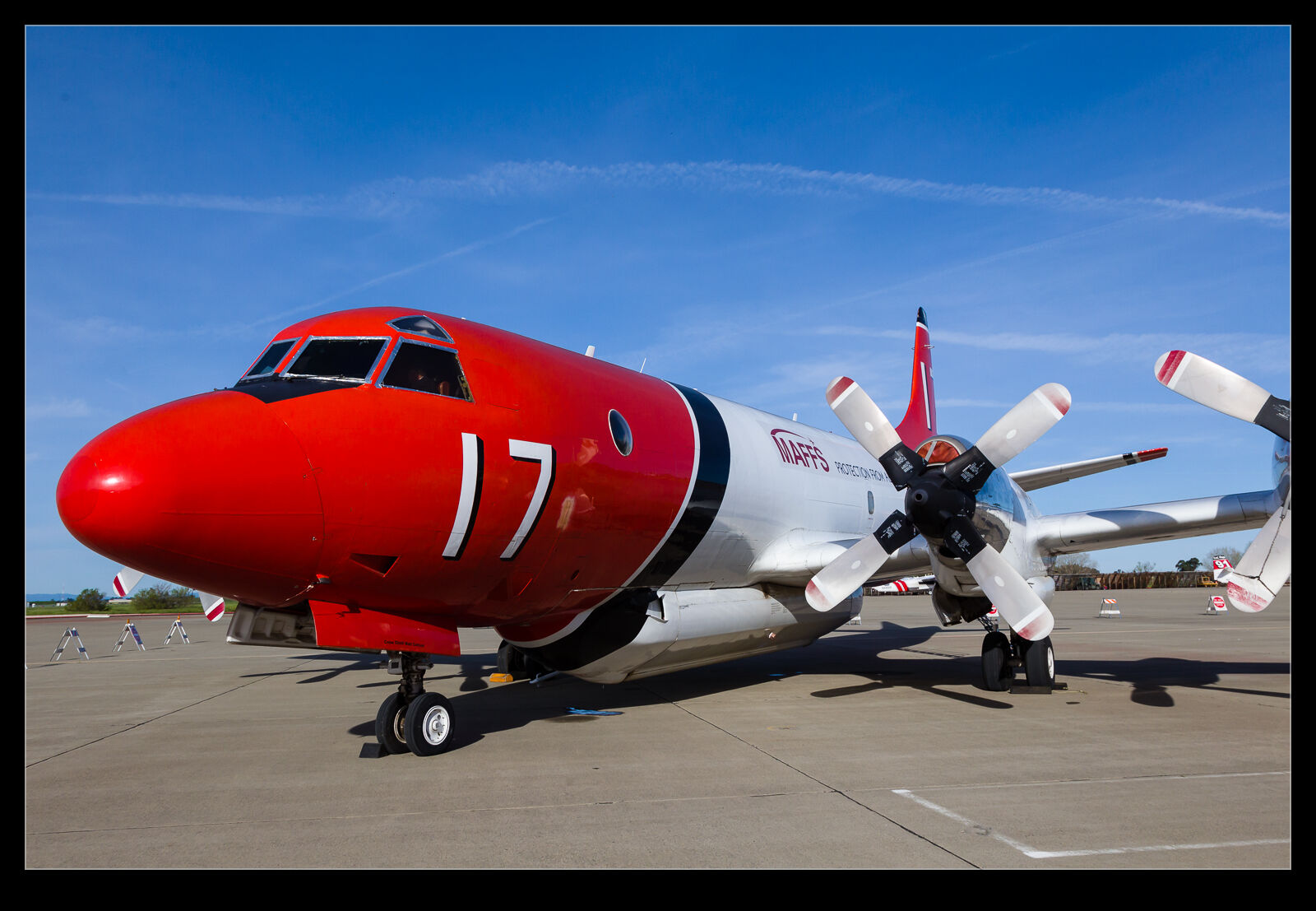 I didn’t get to take as many stills as I had planned. The organizers asked me to shoot some video for the, which I did. Hayman was working with me so he made sure we had the necessary shots for the GAR feature. After a few passes, I was able to switch and get some stills anyway. I also got roped in to taking the group photo for the conference attendees. If I had known that was required, I would have made some arrangements to get a better vantage point. Still, it was a good day out and the conference sessions I saw were similarly informative. Next year it is in France. Perhaps we shall have to go!
I didn’t get to take as many stills as I had planned. The organizers asked me to shoot some video for the, which I did. Hayman was working with me so he made sure we had the necessary shots for the GAR feature. After a few passes, I was able to switch and get some stills anyway. I also got roped in to taking the group photo for the conference attendees. If I had known that was required, I would have made some arrangements to get a better vantage point. Still, it was a good day out and the conference sessions I saw were similarly informative. Next year it is in France. Perhaps we shall have to go!
- A US Army Sikorsky UH-60 Black Hawk taxis in at McClellan Field in Sacramento CA.
Nice Challenger 300
 I may joke about what my favorite business jet would be to buy but, of course, I am not getting one any time soon. That doesn’t stop me considering which would be a good choice. The large cabin ultra long range jets are, without doubt, a nice idea but I would actually like something in the super midsize bracket. This would meet most of my needs (except for paying for it of course). One great looking jet and a good performer is the Bombardier Challenger 300 (and the newer 350). I would certainly be happy with one of these. This example is one that I saw at Hayward recently. Should I get one do you think?
I may joke about what my favorite business jet would be to buy but, of course, I am not getting one any time soon. That doesn’t stop me considering which would be a good choice. The large cabin ultra long range jets are, without doubt, a nice idea but I would actually like something in the super midsize bracket. This would meet most of my needs (except for paying for it of course). One great looking jet and a good performer is the Bombardier Challenger 300 (and the newer 350). I would certainly be happy with one of these. This example is one that I saw at Hayward recently. Should I get one do you think?
Marine Corps C-9
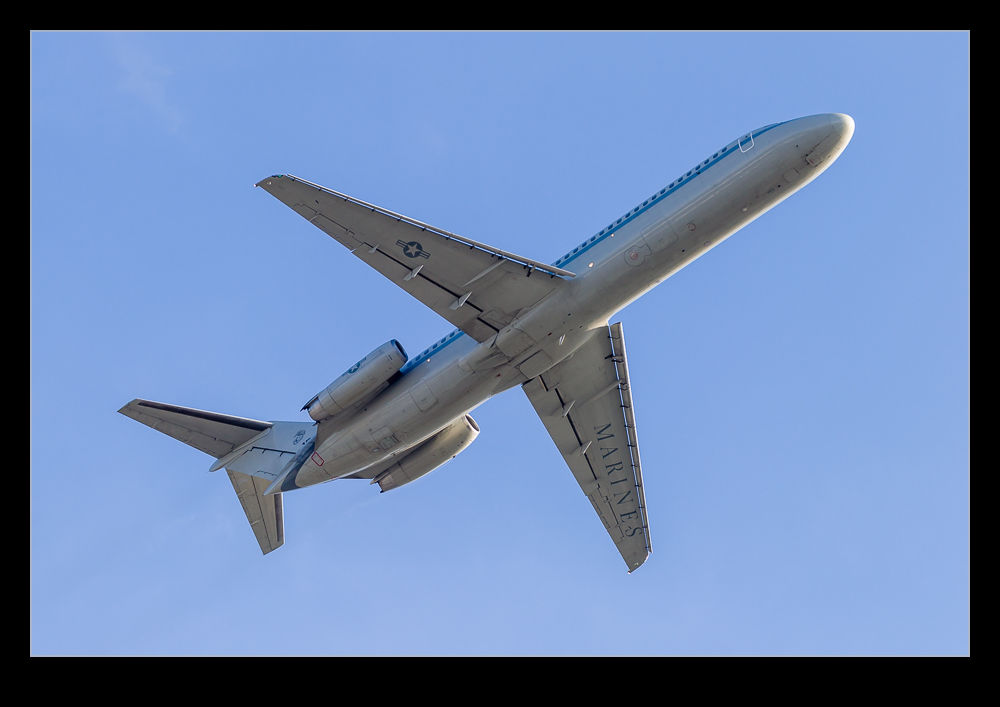 If you had asked me whether the McDonnell Douglas C-9 Skytrain was still in service, I would have said no. Used by the Navy and Marine Corps, the fleet had been wound down as C-40 Clippers were introduced. I thought that they had all gone by now. You can guess, then, that I was rather surprised when I saw one at SFO. Two aircraft were on parallel approaches – one a Delta 757 and the other appearing to be a DC-9/MD-87/Boeing717. I wasn’t paying a lot of attention but parallel approaches are always worth a shot so I was taking pictures when I realized that the aircraft was a C-9B Skytrain in Marine Corps markings. The conditions were a bit heat hazy but I wasn’t going to miss this.
If you had asked me whether the McDonnell Douglas C-9 Skytrain was still in service, I would have said no. Used by the Navy and Marine Corps, the fleet had been wound down as C-40 Clippers were introduced. I thought that they had all gone by now. You can guess, then, that I was rather surprised when I saw one at SFO. Two aircraft were on parallel approaches – one a Delta 757 and the other appearing to be a DC-9/MD-87/Boeing717. I wasn’t paying a lot of attention but parallel approaches are always worth a shot so I was taking pictures when I realized that the aircraft was a C-9B Skytrain in Marine Corps markings. The conditions were a bit heat hazy but I wasn’t going to miss this.
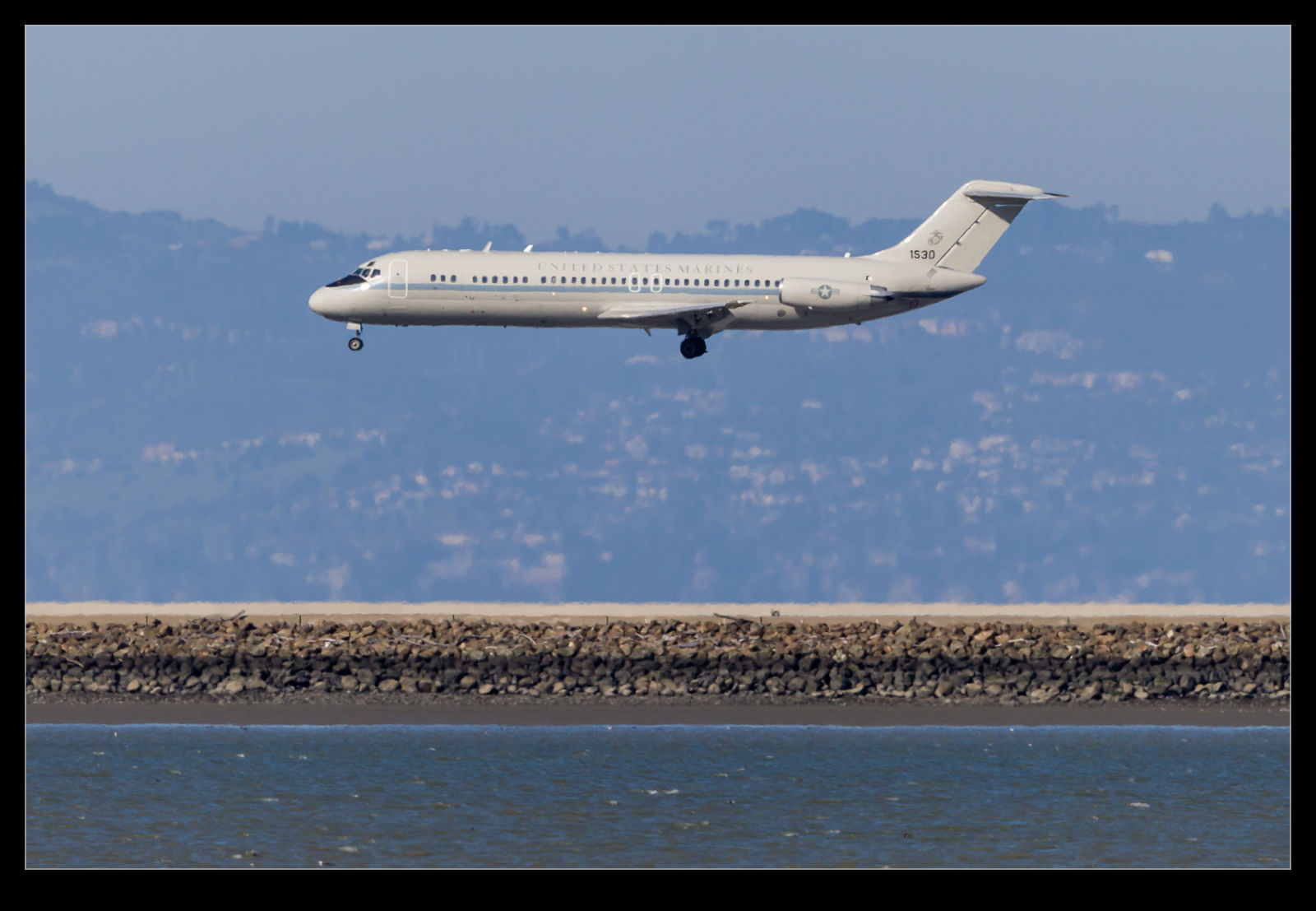 I grabbed a bunch of shots as it landed and felt rather pleased with the turn of events. I then stopped thinking about it. A little later I moved around to the other end of SFO to get some head on departures of some of the widebodies that were due out. You don’t get many narrowbodies taking off on the 28s unless the wind is particularly strong down those runways. One or two will use it but not many. I saw a narrowbody start its takeoff roll and almost ignored it AGAIN!
I grabbed a bunch of shots as it landed and felt rather pleased with the turn of events. I then stopped thinking about it. A little later I moved around to the other end of SFO to get some head on departures of some of the widebodies that were due out. You don’t get many narrowbodies taking off on the 28s unless the wind is particularly strong down those runways. One or two will use it but not many. I saw a narrowbody start its takeoff roll and almost ignored it AGAIN!
 However, I did end up trying some shots and then realizing as it got closer that it was the C-9B again. I guess it was just my lucky day that I had two opportunities to miss it and didn’t either time. As it flew overhead, I was able to get some far better angles on it than were possible when on approach. I also got to experience the noise levels that jets of this vintage came with. I did a little research afterwards and apparently only two jets remain in use with the Marine Corps and all Navy and Air Force examples are retired. This one is a rare one indeed, not least because it is based on the east coast. No idea how long they have left but this was certainly a fortunate encounter.
However, I did end up trying some shots and then realizing as it got closer that it was the C-9B again. I guess it was just my lucky day that I had two opportunities to miss it and didn’t either time. As it flew overhead, I was able to get some far better angles on it than were possible when on approach. I also got to experience the noise levels that jets of this vintage came with. I did a little research afterwards and apparently only two jets remain in use with the Marine Corps and all Navy and Air Force examples are retired. This one is a rare one indeed, not least because it is based on the east coast. No idea how long they have left but this was certainly a fortunate encounter.
Southern Hemisphere Rest Stop
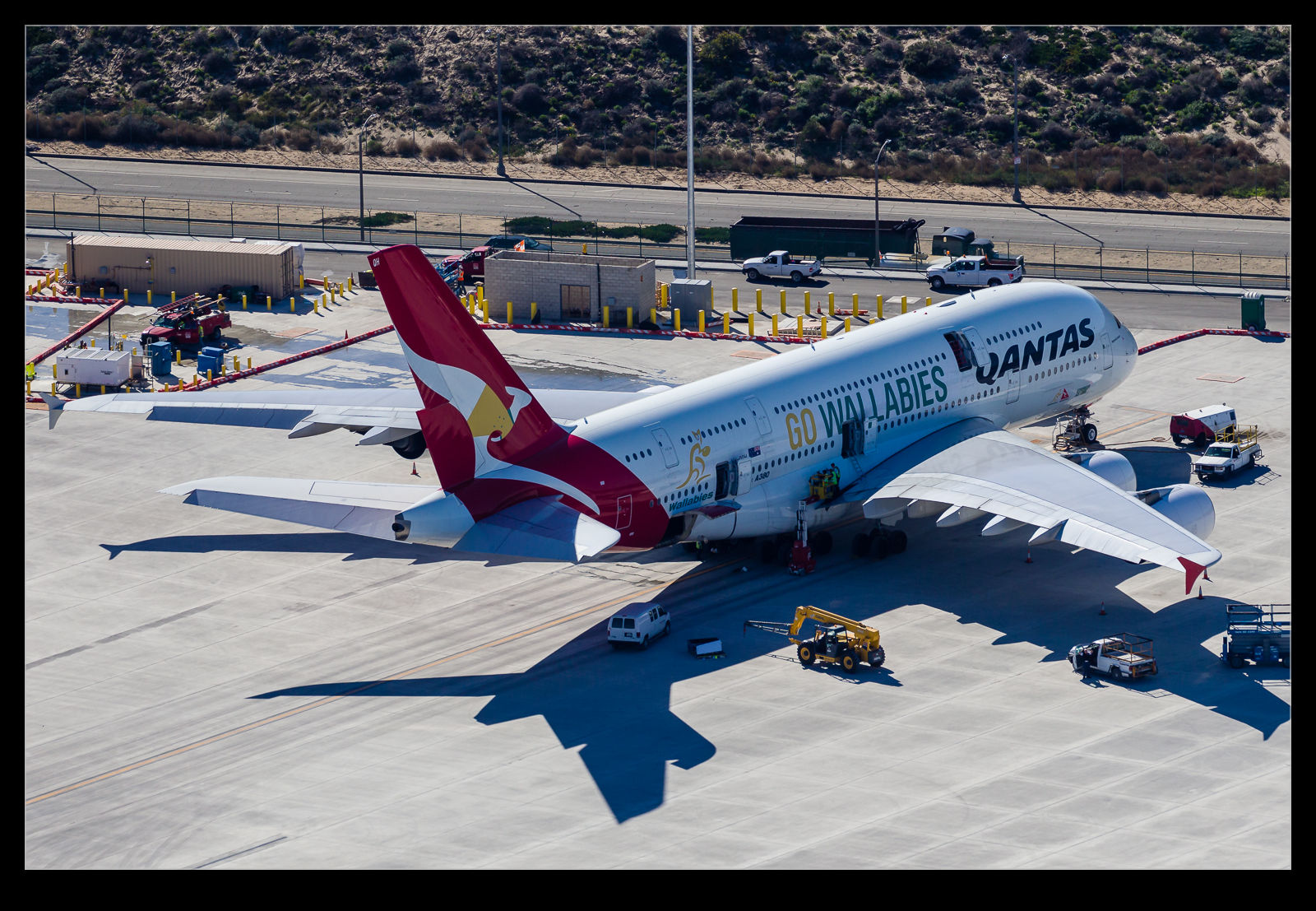 The scheduling of flights from Australia and New Zealand to the west coast of the US is not ideal for getting maximum utilization from your aircraft. There is a long time between the arrivals and the most desirable time for departing on the return journey. Consequently, there are a lot of jets that spend a good portion of the day sitting at LAX. Rather than waste valuable gate space, these jets are disembarked and then towed to remote stands to await the time when the evening flights will be readied.
The scheduling of flights from Australia and New Zealand to the west coast of the US is not ideal for getting maximum utilization from your aircraft. There is a long time between the arrivals and the most desirable time for departing on the return journey. Consequently, there are a lot of jets that spend a good portion of the day sitting at LAX. Rather than waste valuable gate space, these jets are disembarked and then towed to remote stands to await the time when the evening flights will be readied.
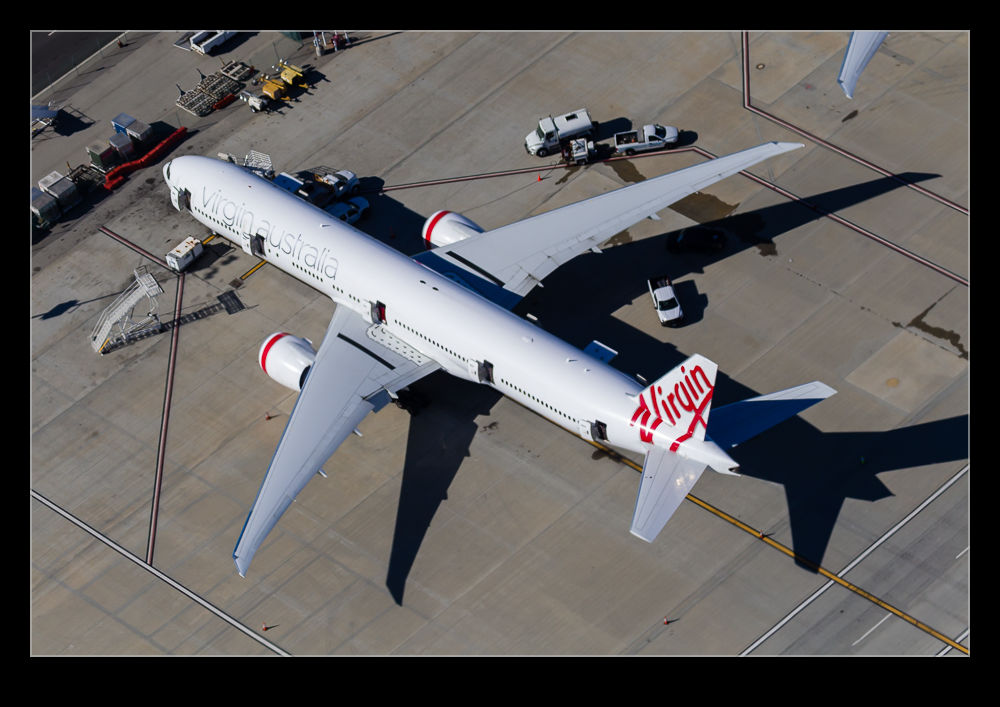 There is a large parking area to the west end of LAX where these jets are kept. You will see Qantas, Virgin Australia and Air New Zealand aircraft all parked up here in the middle of the day. We were able to make a short detour from our normal operating area to the west end of the airport when ATC was able which meant we could get a good view of the jets parked up here. One of the Qantas jets was carrying special markings for the Wallabies rugby team. Later in the day they will have started the return trek across the Pacific.
There is a large parking area to the west end of LAX where these jets are kept. You will see Qantas, Virgin Australia and Air New Zealand aircraft all parked up here in the middle of the day. We were able to make a short detour from our normal operating area to the west end of the airport when ATC was able which meant we could get a good view of the jets parked up here. One of the Qantas jets was carrying special markings for the Wallabies rugby team. Later in the day they will have started the return trek across the Pacific.
